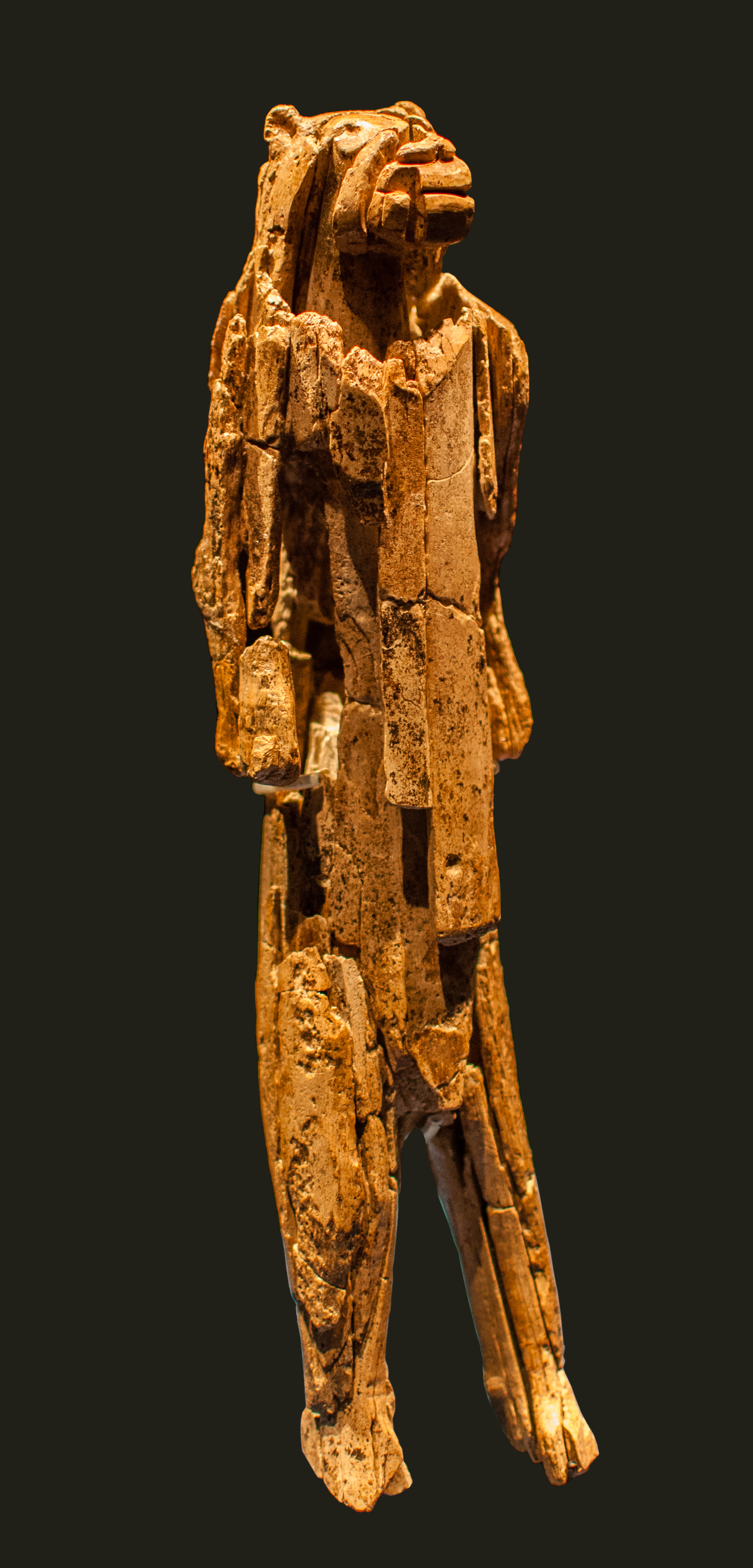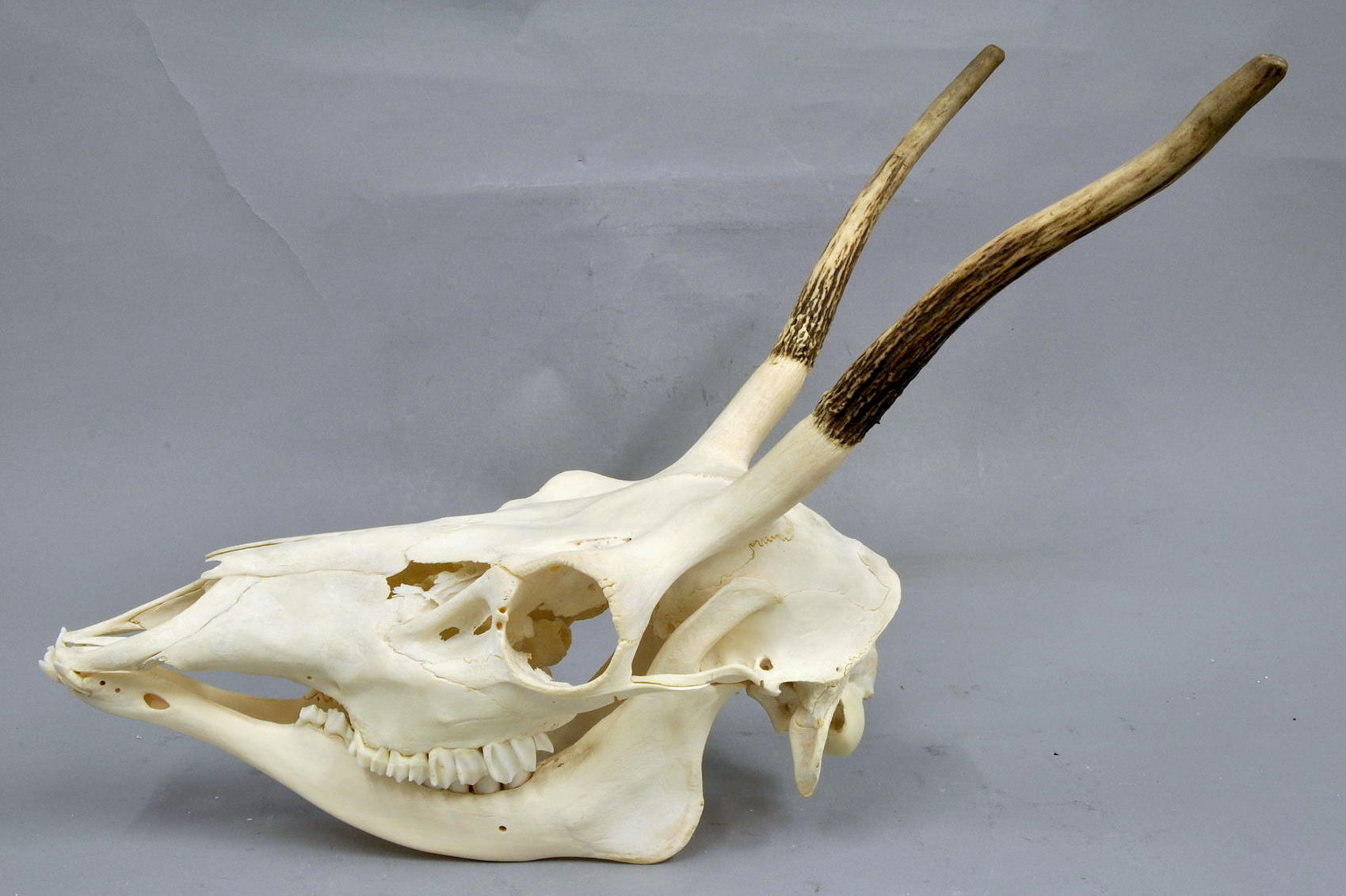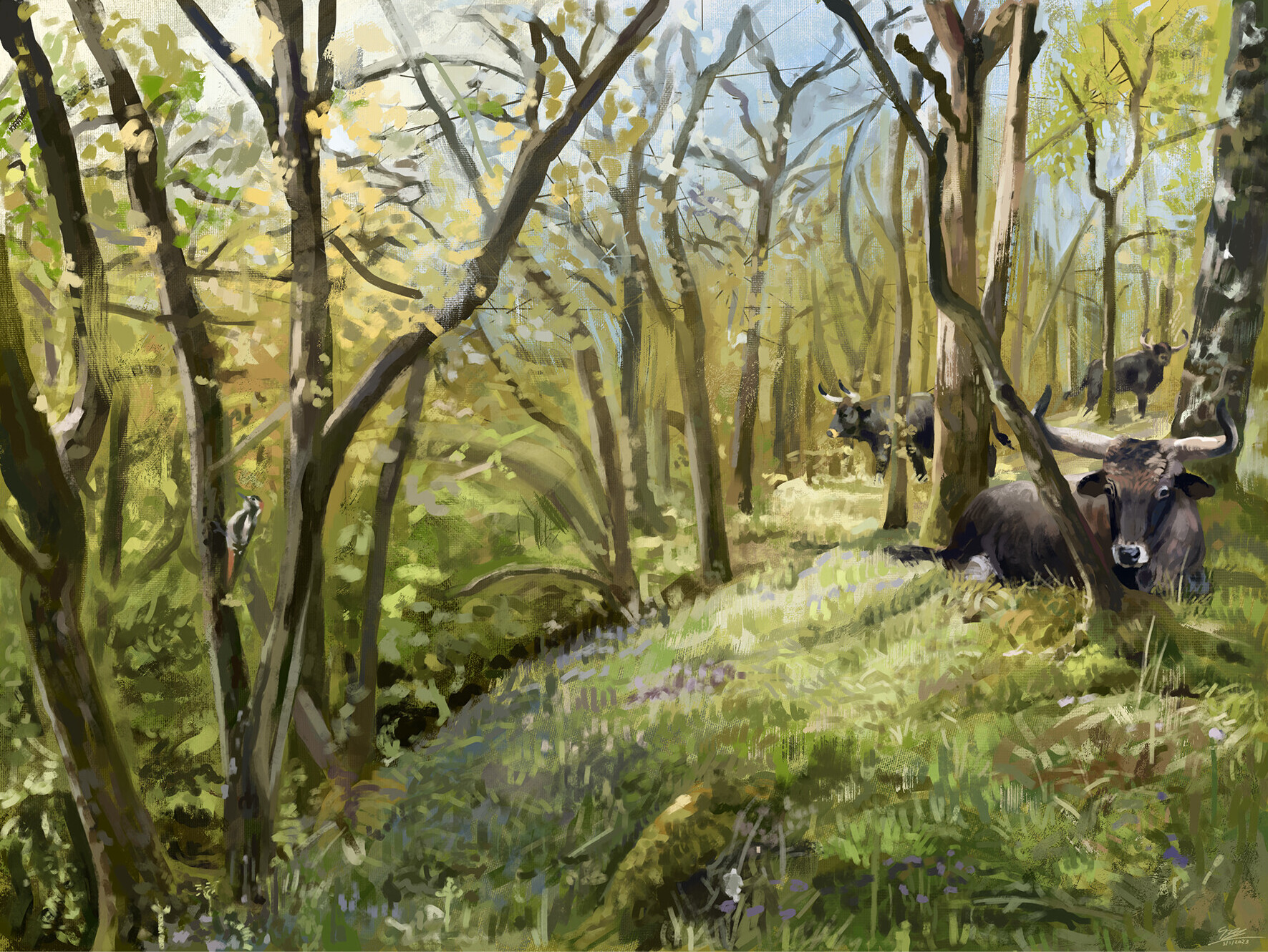|
Grotta Del Genovese
The Grotta del Genovese (in English: Genovese Cave) is located on the island of Levanzo, in the Aegadian Islands, northwest of Sicily. The cave was discovered in 1949. History The cave, which opens into the limestone rocks that form the island, preserves significant documentation of Sicilian prehistory, particularly from the Upper Paleolithic period. It provides images of Quaternary animals such as the red deer, aurochs, and hydrontin, as well as some human figures with bird-head masks and headdresses similar to those found in the Addaura caves. In addition to these paintings, there are numerous painted figures, which are more recent. These are colored in red and black and depict male and female human figures as well as mammals and fish, including tuna, which remain significant in the life and culture of the modern Aegadian Islands. The cave is open to visitors, and admission is charged. Paintings The main figure, which dominates over the animals, is that of a man wear ... [...More Info...] [...Related Items...] OR: [Wikipedia] [Google] [Baidu] |
Levanzo
Levanzo (; ) is the smallest of the three main Aegadian Islands in the Mediterranean Sea west of Sicily, Italy. It forms a part of the municipality () of Favignana in the Province of Trapani. Geography Levanzo has an area of . The highest point is Pizzo Monaco with a height of . The island has an estimated 450 inhabitants, who are concentrated around a tiny port, that gives little shelter from storms. The ancient name of the island was "Phorbantia" which is a sort of plant that commonly grows there. Levanzo is famous for the " Grotta del Genovese" with Neolithic cave paintings and Palaeolithic graffiti. Furthermore, in the water of Cala Minnola, on the eastern side of the island of Levanzo, lies one of the most important Sicilian underwater archaeological sites: a Roman cargo ship, loaded with wine amphoras, at 27 meters deep. See also * List of islands of Italy This is a list of islands of Italy. There are nearly 450 islands in Italy, including islands in the Mediterrane ... [...More Info...] [...Related Items...] OR: [Wikipedia] [Google] [Baidu] |
Italy
Italy, officially the Italian Republic, is a country in Southern Europe, Southern and Western Europe, Western Europe. It consists of Italian Peninsula, a peninsula that extends into the Mediterranean Sea, with the Alps on its northern land border, as well as List of islands of Italy, nearly 800 islands, notably Sicily and Sardinia. Italy shares land borders with France to the west; Switzerland and Austria to the north; Slovenia to the east; and the two enclaves of Vatican City and San Marino. It is the List of European countries by area, tenth-largest country in Europe by area, covering , and the third-most populous member state of the European Union, with nearly 59 million inhabitants. Italy's capital and List of cities in Italy, largest city is Rome; other major cities include Milan, Naples, Turin, Palermo, Bologna, Florence, Genoa, and Venice. The history of Italy goes back to numerous List of ancient peoples of Italy, Italic peoples—notably including the ancient Romans, ... [...More Info...] [...Related Items...] OR: [Wikipedia] [Google] [Baidu] |
English Language
English is a West Germanic language that developed in early medieval England and has since become a English as a lingua franca, global lingua franca. The namesake of the language is the Angles (tribe), Angles, one of the Germanic peoples that Anglo-Saxon settlement of Britain, migrated to Britain after its End of Roman rule in Britain, Roman occupiers left. English is the list of languages by total number of speakers, most spoken language in the world, primarily due to the global influences of the former British Empire (succeeded by the Commonwealth of Nations) and the United States. English is the list of languages by number of native speakers, third-most spoken native language, after Mandarin Chinese and Spanish language, Spanish; it is also the most widely learned second language in the world, with more second-language speakers than native speakers. English is either the official language or one of the official languages in list of countries and territories where English ... [...More Info...] [...Related Items...] OR: [Wikipedia] [Google] [Baidu] |
Aegadian Islands
The Aegadian Islands (; ; ; ; ) are a group of five small mountainous islands in the Mediterranean Sea off the northwest coast of Sicily, Italy, near the cities of Trapani and Marsala, with a total area of . The island of Favignana (''Aegusa''), the largest, lies southwest of Trapani; Levanzo (''Phorbantia'') lies west; and Marettimo, the ancient ''Hiera Nesos'', west of Trapani, is now reckoned as a part of the group. There are also two minor islands, Formica (which hosts the Isolotto Formica Lighthouse) and Maraone, lying between Levanzo and Sicily. For administrative purposes the archipelago constitutes the ''comune'' of Favignana in the province of Trapani. The overall population in 2017 was 4,292. Winter frost is unknown and rainfall is low. The main occupation of the islanders is fishing, and the largest tuna fishery in Sicily is there. History There is evidence of Neolithic and even Paleolithic paintings in caves on Levanzo, and to a lesser extent on Favignan ... [...More Info...] [...Related Items...] OR: [Wikipedia] [Google] [Baidu] |
Sicily
Sicily (Italian language, Italian and ), officially the Sicilian Region (), is an island in the central Mediterranean Sea, south of the Italian Peninsula in continental Europe and is one of the 20 regions of Italy, regions of Italy. With 4.7 million inhabitants, including 1.2 million in and around the capital city of Palermo, it is both the largest and most populous island in the Mediterranean Sea. Sicily is named after the Sicels, who inhabited the eastern part of the island during the Iron Age. Sicily has a rich and unique culture in #Art and architecture, arts, Music of Sicily, music, #Literature, literature, Sicilian cuisine, cuisine, and Sicilian Baroque, architecture. Its most prominent landmark is Mount Etna, the tallest active volcano in Europe, and one of the most active in the world, currently high. The island has a typical Mediterranean climate. It is separated from Calabria by the Strait of Messina. It is one of the five Regions of Italy#Autonomous regions with s ... [...More Info...] [...Related Items...] OR: [Wikipedia] [Google] [Baidu] |
Upper Paleolithic
The Upper Paleolithic (or Upper Palaeolithic) is the third and last subdivision of the Paleolithic or Old Stone Age. Very broadly, it dates to between 50,000 and 12,000 years ago (the beginning of the Holocene), according to some theories coinciding with the appearance of behavioral modernity in early modern humans. It is followed by the Mesolithic. Anatomically modern humans (i.e. ''Homo sapiens'') are believed to have emerged in Africa around 300,000 years ago. It has been argued by some that their ways of life changed relatively little from that of archaic humans of the Middle Paleolithic, until about 50,000 years ago, when there was a marked increase in the diversity of Artefact (archaeology), artefacts found associated with modern human remains. This period coincides with the most common date assigned to early human migrations, expansion of modern humans from Africa throughout Asia and Eurasia, which may have contributed to the Neanderthal extinction, extinction of th ... [...More Info...] [...Related Items...] OR: [Wikipedia] [Google] [Baidu] |
Quaternary
The Quaternary ( ) is the current and most recent of the three periods of the Cenozoic Era in the geologic time scale of the International Commission on Stratigraphy (ICS), as well as the current and most recent of the twelve periods of the Phanerozoic eon. It follows the Neogene Period and spans from 2.58 million years ago to the present. The Quaternary Period is divided into two epochs: the Pleistocene (2.58 million years ago to 11.7 thousand years ago) and the Holocene (11.7 thousand years ago to today); a proposed third epoch, the Anthropocene, was rejected in 2024 by IUGS, the governing body of the ICS. The Quaternary is typically defined by the Quaternary glaciation, the cyclic growth and decay of continental ice sheets related to the Milankovitch cycles and the associated climate and environmental changes that they caused. Research history In 1759 Giovanni Arduino proposed that the geological strata of northern Italy could be divided into four succ ... [...More Info...] [...Related Items...] OR: [Wikipedia] [Google] [Baidu] |
Red Deer
The red deer (''Cervus elaphus'') is one of the largest deer species. A male red deer is called a stag or Hart (deer), hart, and a female is called a doe or hind. The red deer inhabits most of Europe, the Caucasus Mountains region, Anatolia, Iran, and parts of western Asia. It also inhabits the Atlas Mountains of Northern Africa, being the only living species of deer to inhabit Africa. Red deer have been introduced to other areas, including Australia, New Zealand, the United States, Canada, Peru, Uruguay, Chile and Argentina. In many parts of the world, the meat (venison) from red deer is used as a food source. The red deer is a ruminant, characterized by a four-chambered stomach. Genetics, Genetic evidence indicates that the red deer, as traditionally defined, is a species group, rather than a single species, though exactly how many species the group includes remains disputed. The ancestor of the red deer probably originated in central Asia. Although at one time red deer were ... [...More Info...] [...Related Items...] OR: [Wikipedia] [Google] [Baidu] |
Aurochs
The aurochs (''Bos primigenius''; or ; pl.: aurochs or aurochsen) is an extinct species of Bovini, bovine, considered to be the wild ancestor of modern domestic cattle. With a shoulder height of up to in bulls and in cows, it was one of the largest herbivores in the Holocene; it had massive elongated and broad horns that reached in length. The aurochs was part of the Pleistocene megafauna. It probably evolved in Asia and migrated west and north during warm interglacial periods. The oldest-known aurochs fossils date to the Middle Pleistocene. The species had an expansive range spanning from Western Europe and North Africa to the Indian subcontinent and East Asia. The distribution of the aurochs progressively contracted during the Holocene due to habitat loss and hunting, with the last known individual dying in the Jaktorów forest in Poland in 1627. There is a long history of interaction between aurochs and humans, including archaic hominins like Neanderthals. The aurochs ... [...More Info...] [...Related Items...] OR: [Wikipedia] [Google] [Baidu] |
European Wild Ass
The European wild ass (''Equus hydruntinus'' or ''Equus hemionus hydruntinus'') or hydruntine is an extinct equine from the Middle Pleistocene to Late Holocene of Europe and West Asia, and possibly North Africa. It is a member of the subgenus ''Asinus'', and closely related to the living Asiatic wild ass. The specific epithet, ''hydruntinus'', means ''from Otranto'' ('' Hydruntum'' in Latin). Description In comparison to the Asiatic wild ass (''Equus hemionus''), the muzzle region of the skull is much shorter and somewhat proportionally wider, the palate is elongate, and the nasal notch is shorter. The teeth are relatively small compared to skull size, but are very hypsodont (high crowned). The shafts of the metacarpal and metatarsal bones are also more robust. Evolutionary history ''Equus hydruntinus'' appeared first in the fossil record around 600,000 years ago during the Middle Pleistocene. In the Late Pleistocene it was widespread throughout much of western Eurasia fro ... [...More Info...] [...Related Items...] OR: [Wikipedia] [Google] [Baidu] |
Grotta Dell'Addaura
The Addaura cave (Italian: Grotta dell'Addaura) is a complex of three natural grottoes located on the northeast side of Mount Pellegrino in Palermo, Sicily, Southern Italy. The importance of the complex is due to the presence of cave-wall engravings dated to the late Epigravettian (contemporaneous with the Magdalenian) and the Mesolithic. On the side of Mount Pellegrino, overlooking Palermo, to the southeast of Mondello beach at above sea level, there are some open grottoes and cavities where bones and tools used for hunting have been found, attesting the presence of humans who lived in them beginning in the Paleolithic and into the Mesolithic. The finds are now conserved in Palermo's Regional Archaeological Museum. Their importance is mainly due to the presence of an extraordinary complex of rock engravings that decorate the walls, constituting a unique case in the panorama of prehistoric cave art. The name ''Addaura'' comes from ', 'the circuit'. History The discovery of ... [...More Info...] [...Related Items...] OR: [Wikipedia] [Google] [Baidu] |
Mammal
A mammal () is a vertebrate animal of the Class (biology), class Mammalia (). Mammals are characterised by the presence of milk-producing mammary glands for feeding their young, a broad neocortex region of the brain, fur or hair, and three Evolution of mammalian auditory ossicles, middle ear bones. These characteristics distinguish them from reptiles and birds, from which their ancestors Genetic divergence, diverged in the Carboniferous Period over 300 million years ago. Around 6,640 Neontology#Extant taxon, extant species of mammals have been described and divided into 27 Order (biology), orders. The study of mammals is called mammalogy. The largest orders of mammals, by number of species, are the rodents, bats, and eulipotyphlans (including hedgehogs, Mole (animal), moles and shrews). The next three are the primates (including humans, monkeys and lemurs), the Artiodactyl, even-toed ungulates (including pigs, camels, and whales), and the Carnivora (including Felidae, ... [...More Info...] [...Related Items...] OR: [Wikipedia] [Google] [Baidu] |






